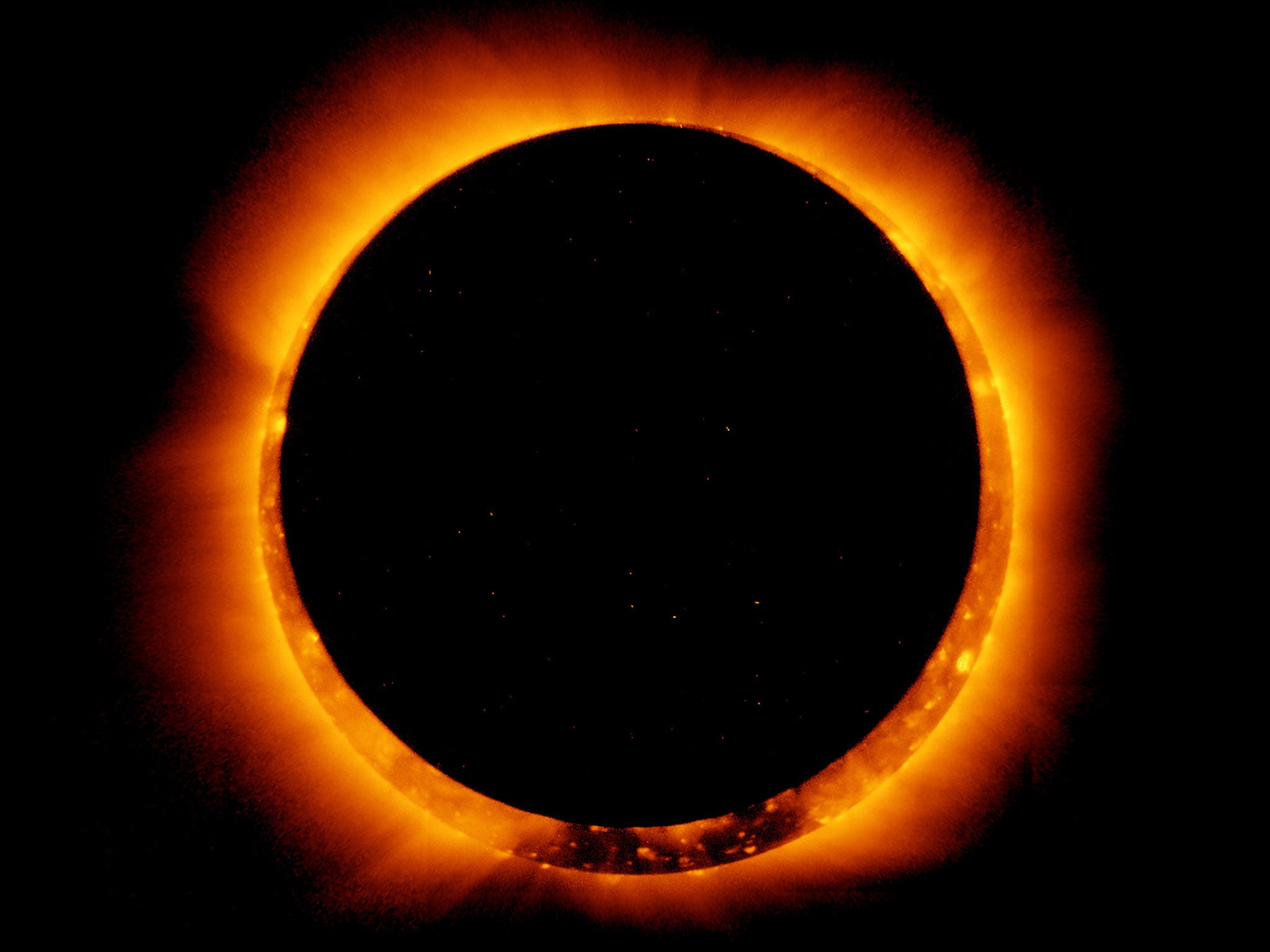Solar eclipse: The sun is disappearing, and you have only 10 months to prepare
We have warned you

Your support helps us to tell the story
From reproductive rights to climate change to Big Tech, The Independent is on the ground when the story is developing. Whether it's investigating the financials of Elon Musk's pro-Trump PAC or producing our latest documentary, 'The A Word', which shines a light on the American women fighting for reproductive rights, we know how important it is to parse out the facts from the messaging.
At such a critical moment in US history, we need reporters on the ground. Your donation allows us to keep sending journalists to speak to both sides of the story.
The Independent is trusted by Americans across the entire political spectrum. And unlike many other quality news outlets, we choose not to lock Americans out of our reporting and analysis with paywalls. We believe quality journalism should be available to everyone, paid for by those who can afford it.
Your support makes all the difference.Don't say you weren't warned: Aug. 21, 2017, "may turn out to be the most popular vacation-day request in history," Michael E. Bakich writes in Discover magazine -- so you may want to get that time-off request in early.
Why? Because on that date -- for the first time in 99 years -- a total eclipse of the sun will be visible across the United States, from sea to temporarily-not-shining sea. Millions of Americans will be in easy driving distance of a spectacle that has been called indescribable, unforgettable, even life-altering. The sun will disappear for about 2½ minutes, beginning in Oregon about 10:15 a.m. local time; the phenomenon will move eastward, ending an hour and a half later in South Carolina. In between, the eclipse will be visible from Grand Teton and the Great Smoky Mountains national parks, from St. Louis and Kansas City and Charleston, S.C., and all points in between.
The last time a total eclipse was visible coast to coast was June 8, 1918, and it was front-page news nationwide. In "Plan Now for the 2017 Eclipse," Bakich -- a senior editor at Astronomy magazine -- takes very seriously the idea that if you don't plan ahead, you could miss out on a once-in-a-lifetime opportunity. Indeed, look around the Internet and you'll see that hotels and campgrounds along the 50-to-70-mile-wide path of "totality" have been booking up since May.

In addition to calling your boss early so you can get the day off, Bakich has these suggestions:
● Get eclipse glasses -- for just a few dollars you can get lenses made with optical Mylar, or #14 welder's glass.
● Find friends who have a solar telescope and watch with them. (You'll see sunspots, the irregular profile of the moon's edge, a glimpse of Venus.)
● During the eclipse, remember to tear your eyes away from the sun and turn around: In every direction, you'll see the painterly colors of a 360-degree sunset.
Everyone in the lower forty-eight will be able to see at least a partial eclipse -- unless you're under cloudy skies, where the sky will just grow darker. But as many passionate bloggers are pointing out, if you want to see it all, get a map and find yourself a spot where the eclipse will be total. " 'Close' is NOT close enough!' " warns one site: "Just as the person who only smells the meal outside the steakhouse remains hungry, so too do those who observe the eclipse from outside the path of totality end the day wondering what, indeed, all the fuss was about." Or from another, somewhat grimmer, blogger: "Likening a partial eclipse to a total eclipse is like comparing almost dying to dying."
Washington Post
Join our commenting forum
Join thought-provoking conversations, follow other Independent readers and see their replies
Comments